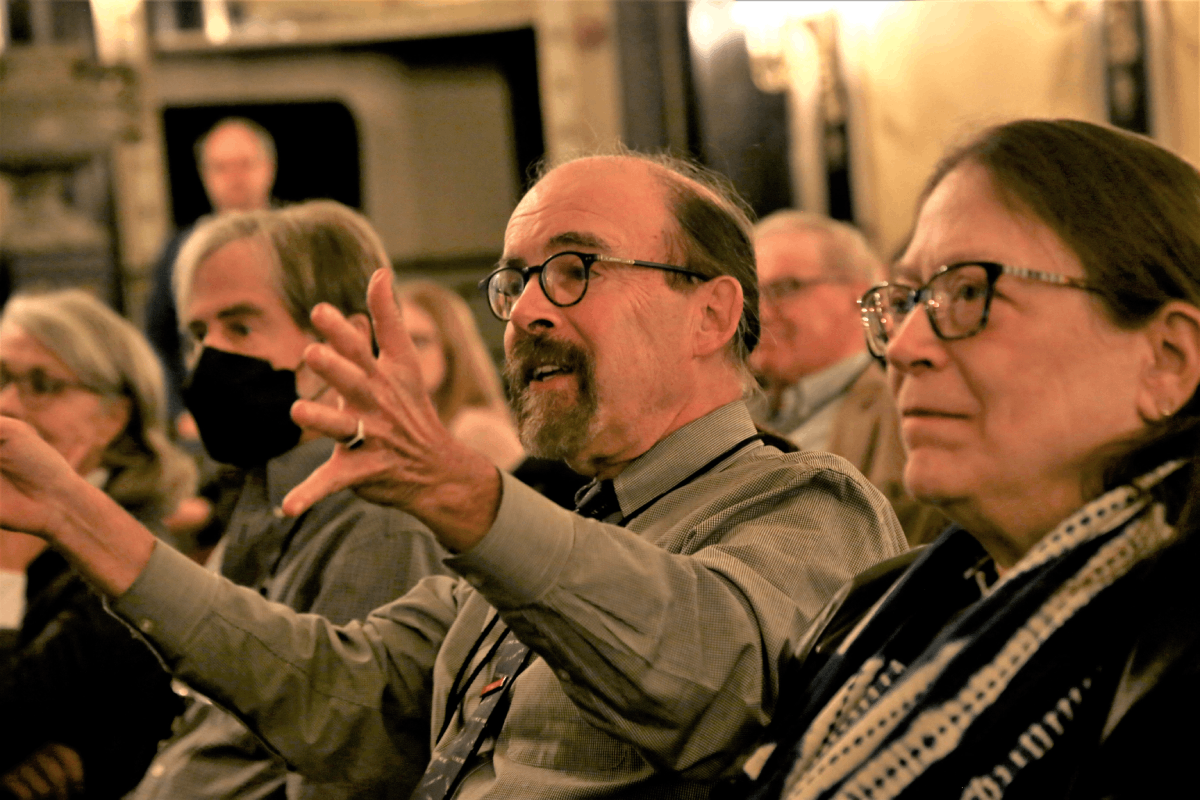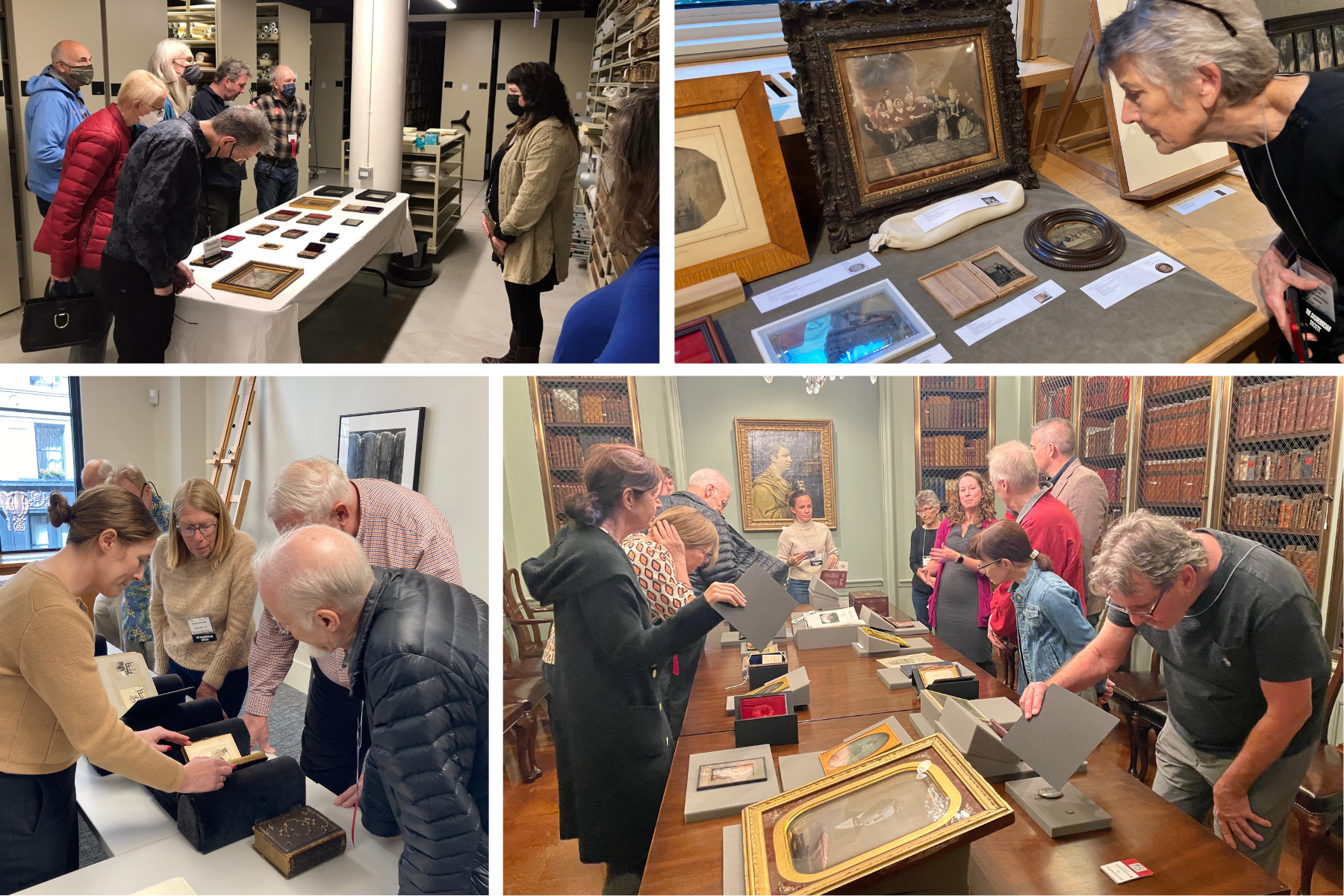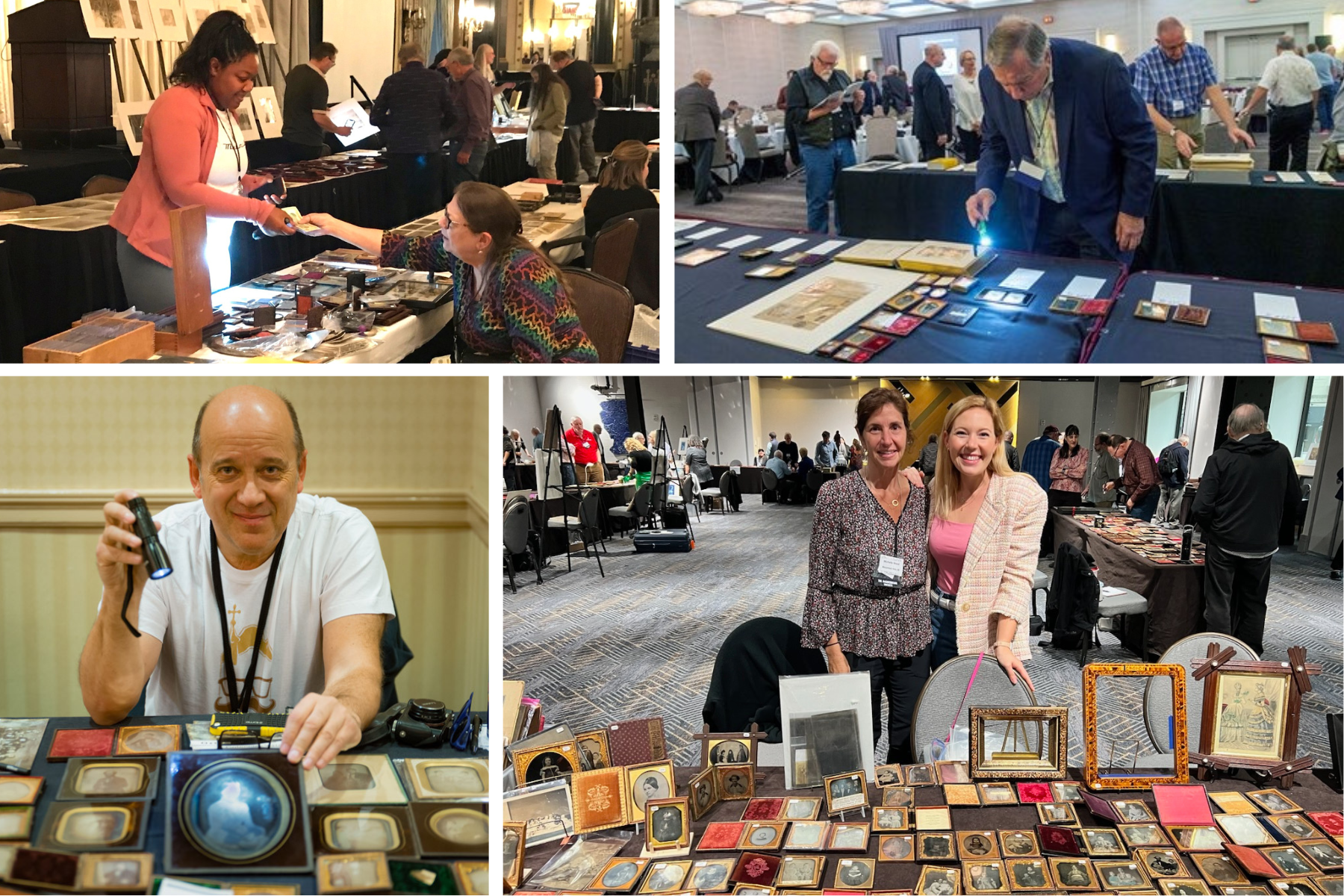- Home
- News & Events
- 2025 Symposium & Photo Fair
GREAT IMAGES! GREAT FRIENDS! THE TALKS, THE AUCTION, THE WHEELING & THE DEALING!
It's the 2025 Daguerreian Society Symposium & Photo Fair in Hartford!
Whether this is your first Symposium or your 37th, you won’t want to miss Hartford 2025, a celebration of 19th-century photography bringing together collectors, historians, scholars, and museum professionals from around the world. You’ll join other lovers of daguerreotypes and other early photographs gathering at the Wadsworth Atheneum Museum of Art in Hartford, Connecticut on Thursday, September 25, with events scheduled through Saturday, September 27. Register for the in-person Symposium | Click here for in-person program
Expert talks shine new light on the art, scholarship, and preservation of early photography. Photos by Carlos Vertanessian and Jo Ann Kraus |

An opportunity to catch up with old friends and colleagues, deepen relationships, learn, socialize and celebrate accomplishments while sharing a common passion. Photos by Carlos Vertanessian.
This is your once-a-year chance to reconnect with old friends and colleagues…and to make new connections with other people who understand the all-out thrill of sharing great photographic images from the past…people who share the way you feel about the vivid, time-travel experiences offered by 19th-century photography.

Audience members engage with leading authorities on 19th-century photography. Photo by Carlos Vertanessian
Here are some of the events that you'll enjoy when you participate in Hartford 2025:
- A festive opening reception for attendees only, right at the Wadsworth Atheneum Museum of Art
- Talks by expert speakers presenting important discoveries and new research, showing seldom-seen images and offering new insights into photography’s beginnings
- A photo fair with veteran dealers and newcomers offering more daguerreotypes and 19th-century photographs than can be seen anywhere. Buy, sell, trade, or just look and learn – it’s an opportunity that only comes along once a year.
- A grand banquet with a live auction and silent auction featuring exceptional images
- Room-hopping to catch up with friends and see what’s on the market
- And behind-the-scenes viewings of photography collections at leading cultural institutions, led by their curators

Behind-the-scenes viewings provide rare access to museum-quality images and experts. Photos by David S. Fondiller and Carlos Vertanessian

Registrants gain early access to the Photo Fair before it opens to the public. Photos by Carlos Vertanessian, David S. Fondiller and Jo Ann Kraus
Block out the time on your calendar…then register for the Symposium and make your room reservation for a stay at the DoubleTree by Hilton Hartford Downtown at a special rate (reserve by August 13 for the special rate as rooms are limited). Our official host hotel, the Hartford Marriott Downtown, is already fully booked.
Members who register early save $. So what are you waiting for?? See you in Hartford!

The Wadsworth Atheneum Museum of Art, where Thursday’s opening reception and Friday's talks will be held. At right, Allen Phillips, a longtime Daguerreian Society member and curator of the museum's new exhibition on "The Scenic Daguerreotype in America 1840–1860." Sources: Public Art CT, Carlos Vertanessian
Behind-the-Scenes Institution Visits
Our lineup of museum and institution visits will include private tours of several 19th-century photography collections. Click here for details!
Expert Talks

This year’s presenters bring fresh perspectives on 19th-century photography. You’ll discover unseen Native American portraits, get access to hidden gems in a major institutional collection, and learn how artificial intelligence can help identify people in early photographs. Click here for details!
Photo Fair
The Daguerreian Society Photo Fair will be held on Saturday, September 27, 2025 in the Marriott Ballroom of the Hartford Marriott Downtown, 200 Columbus Boulevard, Hartford, CT. It is open to Symposium attendees as well as the public.
Symposium attendees and members: 9 am early admission. Entry cost ($10) included with conference registration.
General admission: 10 am - 4 pm, $10.
Registration
To register for the conference, click here. By registering, you receive all the program highlights mentioned above. Further details will follow in emails and Daguerreian Society Quarterly issues.
A summary of the registration options is as follows. Early registration typically ends a month before the event.
| Member | Non-member | Dealer Tables |
| $350 early | $400 any time | $200 center table |
| $375 late | $250 wall table |
Virtual Symposium 🆕
Can’t make it to Hartford? Be part of the Symposium from wherever you are!
Join us online for the Virtual Symposium Experience!
Hotels
Because our official host hotel, the Hartford Marriott Downtown, is already fully booked for Thursday and Friday nights, September 25 and 26, we have arranged a group room block at the nearby DoubleTree by Hilton Hartford Downtown.
A dedicated website has been set up to book your rooms at the DoubleTree. The Society’s discounted group rate is $239 per night excluding taxes. Reserve your room early - the group rate is only available until August 13 (or until the block sells out)! You can always cancel up to 72 hours in advance without incurring a fee.
See hotel location on Google Maps.
If you have any questions or are interested in sharing a room, please contact Business Director Diane Filippi at info@daguerreiansociety.org.
DoubleTree by Hilton Hartford Downtown

The DoubleTree by Hilton Hartford Downtown is an 8-minute walk to the Wadsworth Atheneum. Photos by the DoubleTree by Hilton Hartford Downtown
Hartford Marriott Downtown

The Hartford Marriott Downtown is a 5-minute walk to the Wadsworth Atheneum. Other attractions within walking distance include the Old State House, the State Capitol Building, and the Connecticut Science Center. Photos by the Hartford Marriott Downtown
To book a room at the Hartford Marriott Downtown (e.g., for Saturday night only), click here.
Hartford has an array of world-class cultural attractions for art and history lovers. Click here for a partial list to whet your appetite.


